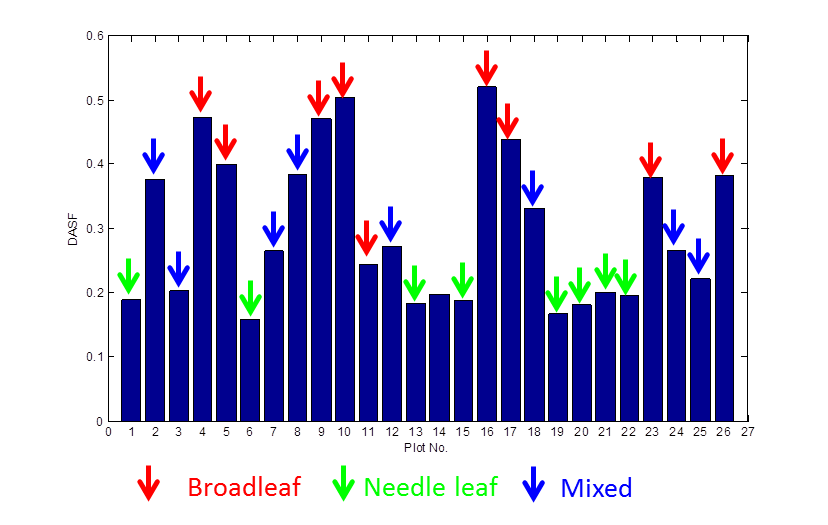A new review paper has been recently published by International Journal of Applied Earth Observation and Geoinformation. The paper is amongst the outputs of a PhD thesis by Zhihui Wang from the University of Twente, and focuses on retrieval of forest canopy foliar nitrogen from hyperspectral imagery by additionally correcting for canopy structure effects. Te main research question arose from the fact that the interaction between leaf properties and canopy structure confounds the estimation of foliar nitrogen, which can be corrected for by using the canopy scattering coefficient (the ratio of BRF and the directional area scattering factor, DASF).

Directional area scattering factor (DASF) calculated based on spectral invariant theory for broadleaf, needle leaf, and mixed forest
The results of the research conducted across the Bavarian Forest National Park confirm that %N can be retrieved using the scattering coefficient aftercorrecting for canopy structural effect. With the aid of upcoming space-borne hyperspectral imagery, large-scale foliar nitrogen maps can be generated to improve the modeling ofecosystem processes as well as ecosystem-climate feedbacks.
Further information on this paper can be found here.
Source:
Wang, Z., Skidmore, A. K., Wang, T., Darvishzadeh, R., Heiden, U., Heurich, M., Latifi, H., Hearne, J. 2016. Canopy foliar nitrogen retrieved from airborne hyperspectral imagery by correcting for canopy structure effects. International Journal of Applied Earth Observation and Geoinformation 54(2017): 84-94.







